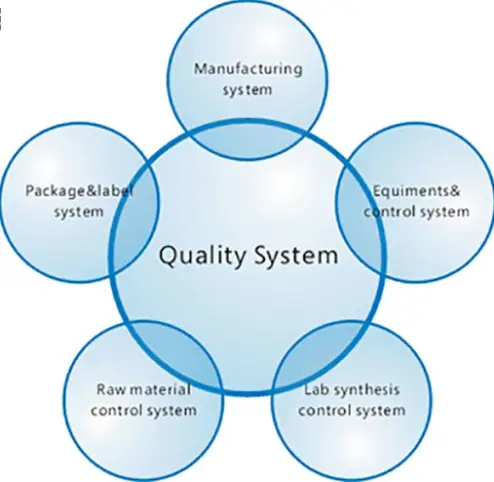GMP Deficiencies in Pharmaceutical Industry “Critical and Major deficiencies”
The GMP Deficiencies findings of a Good Manufacturing Practice (GMP) inspection can have a substantial impact on both your organization and, subsequently, public health.
If the GMP Deficiencies found are classified as significant, they may necessitate cessation of manufacturing activities and/or product withdrawal from the market.
In the advent of globalization, harmonized procedures, including the classification of GMP Deficiencies, will improve inter-agency consistency and provide transparency throughout the industry.
1. Critical GMP Deficiencies :
A GMP Deficiencies that has produced, or leads to a significant risk of producing either a product that is harmful to the patient.
A “Critical” GMP Deficiencies also occurs when it is observed that the manufacturer has engaged in fraud, misrepresentation, or falsification of products or data.
A “Critical” GMP Deficiencies may consist of several related deficiencies, none of which on its own may be “Critical”, but which may together represent a ”Critical” deficiency or systems’ failure where a risk of harm was identified and
should be explained and reported as such.
Some Examples
A “Critical” GMP Deficiencies is a serious situation that could result in regulatory action being considered.
- Lack of sterilization validation (relevant to all sterile products).
- Lack of adequate control measures resulting in an actual, or significant risk of, cross-contamination above the level of the health-based exposure limit in subsequent products.
- Evidence of gross pest infestation (relevant to all manufacturers).
- Falsification or misrepresentation of analytical results or records (relevant to all manufacturers).
- Failure to ensure the quality and/or identity of starting materials (relevant to all manufacturers).
- No master batch documents (relevant to all manufacturers).
- Absence, falsification, or misrepresentation of manufacturing and packaging records (relevant to all manufacturers).
- The water system for sterile products is not validated (for manufacturers of sterile products).
- HVAC system for sterile products not validated (for manufacturers of sterile products).
- Grossly unsuitable premises so that there is a high or likely risk of contamination (relevant to all manufacturers).
- No evidence that mandated recall processes has been complied with (relevant to all manufacturers).
Major GMP Deficiencies :
A GMP Deficiencies that is not a “Critical” deficiency, but which:
– Has produced or may produce a product that does not comply with its Marketing Authorisation, Clinical Trial Authorisation, product specification; pharmacopeia requirements, or dossier.
– Does not ensure effective implementation of the required GMP control measures.
-Indicates a major deviation from the terms of the manufacturing authorization.
– Indicates a failure to carry out satisfactory procedures for the release of batches or failure of the authorized person to fulfill his/her duties.
– Consists of several “Other” related GMP Deficiencies, none of which on its own may be “Major”, but which may together represent a “Major” GMP Deficiencies or systems failure and should be explained and reported as such.
Some Examples of GMP Deficiencies rated as “Major” (in the absence of risk-reducing factors) include the following:
- Lack of validation of critical processes (applicable to all medicines, but could be “Critical” for low-dose/high-potency products; particularly sterilization processes for sterile products)
- No or grossly inadequate air filtration to minimize airborne contaminants (applicable to all medicines manufacturers – could be “Critical” if possible contaminants are a safety concern and “Critical” for sterile medicines)
- Missing or ineffective control measures to provide adequate confidence that cross-contamination will be controlled within the health-based exposure limit in subsequent products. (would be “Critical” if resulting cross-contamination has or is likely to exceed the health-based exposure limit).
- Damage (holes, cracks, peeling paint) to walls/ceilings in manufacturing areas where the product is exposed in non-sterile areas.
- Design of manufacturing area that does not permit effective cleaning.
- Insufficient manufacturing space could lead to mix-ups.
- No raw material sampling area for medicine manufacturers (could be classed as “Other” if adequate precautions are taken).
- Sanitary fittings are not used on liquid/cream manufacturing equipment.
- Stored equipment is not protected from contamination.
- Individuals in charge of QC/production are not qualified by education, competency training, and experience.
- Inadequate initial and ongoing training and/or no training records.
- Cleaning procedures not documented and/or no cleaning records.
- Production equipment cleaning procedures not validated.
- Reduced QC testing of raw materials without data to certify suppliers.
- Incomplete testing of raw materials.
- Test methods not validated.
- Complex production processes for non-critical products not validated.
- Unapproved/undocumented changes to master batch or equivalent documents.
- Deviations from instructions not approved.
- No or inadequate internal inspection program.
- No proper release for the supply procedure.
- The product was reworked without proper approval.
- No system/procedures for handling complaints or returned goods.
- Inadequate testing of packaging materials.
- No ongoing stability program and/or stability data for all products not available.
- Insufficient lighting in production or inspection areas.
- The containers from which samples have been taken were not identified.
- The temperature of critical temperature-controlled storage areas is not monitored or alarmed.
- Inadequate change control system.
- Inadequate deviation system.
- No investigation into alarms and temperature excursions for deviations from storage or transport requirements.

